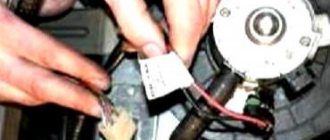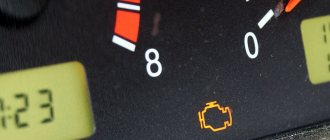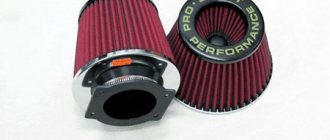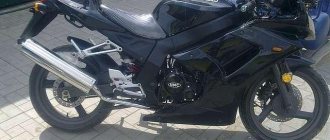Chevrolet Niva SUVs are very popular among numerous motorists due to their good cross-country ability and comfort during country trips. This car is equipped with a reliable Chevrolet Niva gasoline engine complete with a five-speed manual transmission. The volume of the power unit is 1.7 liters, the developed power reaches 80 horsepower. The modern Chevrolet Niva 1 7 engine injector meets the requirements of international standards, thanks to which it is possible to travel outside the country.
What engine is on the Chevrolet Niva
The main design feature of this internal combustion engine is its vertical location under the hood of the car. Fuel injection into 4 cylinders is carried out under the control of a special electronic system built into the engine. Compared to its predecessors, the new modification of the VAZ-2123 engine is much quieter. This is due to the following factors:
- its design includes a hydraulic chain tensioning mechanism;
- single-row arrangement of the chain device;
- valve hydraulics have a special support;
- Knock sensors are installed on the cylinder head bosses of the Chevrolet Niva engine.
Technical characteristics of the Chevrolet Niva:
- Engine power – 80 horsepower.
- Engine volume – 1690 cm3.
- The capacity of the gasoline tank is 58 liters.
- The maximum speed of the car is 140 km/h.
- Developed torque – 127.5 N.m.
- Compression ratio – 9.3 atm.
- Number of cylinders – 4 pcs.
- The total number of valves is 8 pcs.
- Cylinder diameter – 82 mm.
- The minimum stable crankshaft speed is 750 rpm.
- Motor weight – 127 kg.
Depending on operating conditions, the Chevrolet Niva engine consumes fuel per 100 kilometers:
- on country roads - no more than 8.8 liters;
- on city streets - up to 14.1 l;
- combined road conditions - no more than 10.8 liters.
The Chevrolet Niva engine is installed on Niva 21213, 21214, Chevrolet Niva cars.
Description of the motor device
The 2123 engine has a cast iron cylinder block. This makes the engine durable and resistant to high temperatures. But the head that is installed on it is aluminum. Without good cooling, the cylinder head will constantly deform and fail. In this case, a major overhaul is provided to the device.
The cylinder head consists of eight valves. Unlike other engines, hydraulic compensators are built into it. These are the same things that automatically adjust the gap between the valves. Thus, the car owner is freed from manually adjusting the thermal clearance of the valves every thirty thousand kilometers.
The diameter of the cylinders is 82 mm. The fuel injection of the Niva Chevrolet engine is distributed. And the gas distribution mechanism is equipped with hydraulic tensioners. Timing chain tensioners automatically adjust chain tension if it becomes worn. However, if the discrepancy with the new chain is more than two centimeters, it is recommended to change it.
Environmental standards for the Niva Chevrolet engine range from Euro 3 to Euro 5 standards. Therefore, car owners of these cars can freely travel throughout European countries.
The timing chain is single-row. There are special sensors installed on the top of the cylinder head that detect when engine detonation begins.
They protect the engine from slow self-destruction, which is ignored by car owners who have not undergone preventive maintenance for 2 or more years.
Experienced mechanics say that due to the installation of a single-row chain, the operation of the pump that pumps the lubricant of the power unit has improved. The manufacturer also left additional areas for installation of additional equipment.
The oil filter device is no longer screwed into the power unit itself. It has a special jumper, which makes it possible to replace it. The power steering pump is attached to this insert.
The pump uses a roller bearing instead of a ball bearing. This improved the performance of the engine pump on the Niva Chevrolet. Two lambda probes are built into the intake manifold. And the electronic throttle allows you to save fuel.
Experienced mechanics praise the manufacturers for creating such an interesting engine for the domestic car Niva Chevrolet. Thanks to innovations, it was possible to achieve fuel savings without sacrificing the power and cross-country ability of the vehicle.
An interesting engine settings scheme allows young guys to experiment with tuning. Therefore, the power unit is in demand among car owners.
Chevrolet Niva engine management system
Layout of sensors in the engine compartment of the vehicle, supplying information to the electronic control unit:
The control system includes the following sensors:
- liquid temperature in the cooling system (6);
- detonation (9);
- air mass flow (1);
- machine speed (13);
- throttle position (7);
- crankshaft (3);
- oxygen concentration (10) – “Lambda probe”.
Chevrolet Niva engines
According to the Chevrolet Niva classification, it is classified as a compact all-terrain vehicle. Excellent technical characteristics allow you to operate the car in almost any, even the most severe conditions. Therefore, the model has become so popular in our country. Let's look at the features of this vehicle, as well as all the engine models that were installed on the car.
Increasing engine power in Chevrolet Niva
Some Chevrolet Niva owners are not always satisfied with some of the operating parameters and characteristics of the internal combustion engine. Considering the impressive weight of the vehicle and good cross-country ability, they believe that the power of 80 horsepower should be increased slightly. This figure can be increased with some improvements.
Refinement of the Chevrolet Niva engine in order to increase power is carried out in one of several ways:
- Replacement of original components and parts with tuning copies (change of engine configuration geometry).
- Installation of turbocharging.
- Chip tuning (reflashing ECU programs).
Thanks to modifications to the injector, mechanics achieve maximum increases in engine power and torque. In addition to power indicators, the motor gains improved acceleration dynamics. The response to driver control inputs is noticeably improved.
History of Niva production and its main modifications
The production of the Chevrolet Niva first began in the mid-1980s of the last century, but the very first version - the prototype of the modern Niva - VAZ-2123 - saw the world only in 1998. It was produced for a very short time - until 2002, production was in small quantities.
In 2002, the production license was purchased by the General Motors concern, and a new SUV based on the old one appeared - the Chevrolet Niva.
The very first Chevrolet Niva was produced in two models: L and the more advanced GLS.
Since 2006, the FAM-1 appeared, which lasted only a couple of years and was discontinued.
In 2009, a new model Niva went out of production. It currently exists in L, LC, LE, GLS, GLC and LE+ trim levels.
At the moment, the Chevrolet Niva-2 is expected to be released with an updated engine and new equipment.
Features of Niva Chevrolet engine maintenance
The operational life of a Chevrolet Niva engine depends on timely, high-quality scheduled preventive maintenance. To save money, many drivers take care of their car, in particular the power unit, on their own, in a garage.
The list of main works includes measures to replace the following parts, assemblies, and consumables:
- Motor oil.
- Replacement air filter part.
- Antifreeze.
- Fuel filter.
- Brake fluid.
The list of mandatory operations also includes regular checking of the condition of such nodes:
- drive belts for the air conditioning compressor and other auxiliary mechanisms;
- pads, drums, brake discs of front and rear wheels.
If necessary, these parts must be dismantled and subsequently replaced with new copies.
Reprogramming the electronic control unit
The most common method of engine modification is chip tuning. The undoubted advantage of this method is that it does not require significant capital investments, but at the same time it is quite effective. This is due to the fact that chip tuning does not provide for design modernization of the engine.
The essence of chip tuning lies in making changes to the existing ECU system, adjusting the entire fuel supply complex. By changing the properties of the power unit, you can achieve both a reduction in fuel consumption and an increase in power. But at the same time, it is possible to install such software in which a balance will be maintained between consumption and engine operation.
With proper work with the software, you can achieve successful optimization of engine operation, namely setting it to 110-120 hp. at the same fuel consumption.
How to change the oil in a Chevrolet Niva engine with your own hands
According to the maintenance regulations for this power unit, the oil should be changed after a travel distance of 15,000 kilometers. When operating the machine in difficult conditions, the time period is reduced to 7,500 km.
Measures to replace the lubricant are carried out with the engine turned off, a few minutes after the trip. The car must be located on a special elevated platform - an overpass.
Procedure:
- clean the drain plug located at the bottom of the oil pan;
- place a container to collect used lubricant;
- unscrew the plug;
- wait 10 - 15 minutes until the hot oil drains;
- dismantle the old one and install a new oil filter;
- clean the plug and screw it into its original place;
- pour a portion of new oil (3.5 - 3.7 liters) through the filler neck;
- wait 10 minutes and check the level using the oil dipstick (at this stage it should be at its maximum value);
- start the engine;
- check for oil leaks in the area of the filter and drain plug;
- turn off the engine;
- re-check the amount of lubricant (now the level between the MAX and MIN marks is considered normal);
- If necessary, add the missing oil.
Engine characteristics
Initially, the Chevrolet Niva was equipped with two engines, depending on the modification - Z18XE and VAZ-2123. After restyling, only the domestic VAZ-2123 engine was left. In the table below you can see the main characteristics of these internal combustion engines.
| characteristic | VAZ-2123 | Z18XE |
| Engine capacity, cc | 1690 | 1796 |
| Maximum torque, N*m (kg*m) at rev. /min. | 127 (13) / 4000 128 (13) / 4000 | 165 (17) / 4600 167 (17) / 3800 170 (17) / 3800 |
| Maximum power, hp | 80 | 122 — 125 |
| Maximum power, hp (kW) at rev. /min. | 80 (59) / 5000 | 122 (90) / 5600 122 (90) / 6000 125 (92) / 3800 125 (92) / 5600 125 (92) / 6000 |
| Fuel used | Gasoline AI-92 | Gasoline AI-92 Gasoline AI-95 |
| Fuel consumption, l/100 km | 10.09.2018 | 7.9 — 10.1 |
| engine's type | In-line, 4-cylinder | In-line, 4-cylinder |
| Cylinder diameter, mm | 82 | 80.5 |
| Number of valves per cylinder | 2 | 4 |
| Add. engine information | distributed fuel injection | distributed fuel injection |
| Piston stroke, mm | 80 | 88.2 |
| Compression ratio | 9.3 | 10.5 |
| Supercharger | No | No |
| CO2 emissions, g/km | 238 | 185 — 211 |
| Engine life thousand km. | 150-200 | 250-300 |
Drivers are often interested in the location of the engine number. Now it is not required to register a car, but in practice it is still sometimes worth checking its compliance. On the Z18XE it is difficult to find it; it is located at the ebb of the engine near the gearbox. Embossed by laser engraving.
On the VAZ-2123 the marking is located between the 3rd and 4th cylinders. It can be counted without any problems if necessary.
Please note that quite often the number is subject to corrosion. Therefore, after purchasing a car second hand, it is recommended to check the quality of the license plate and, if necessary, clean it. To protect the marking, simply lubricate the area with grease or lithol.











